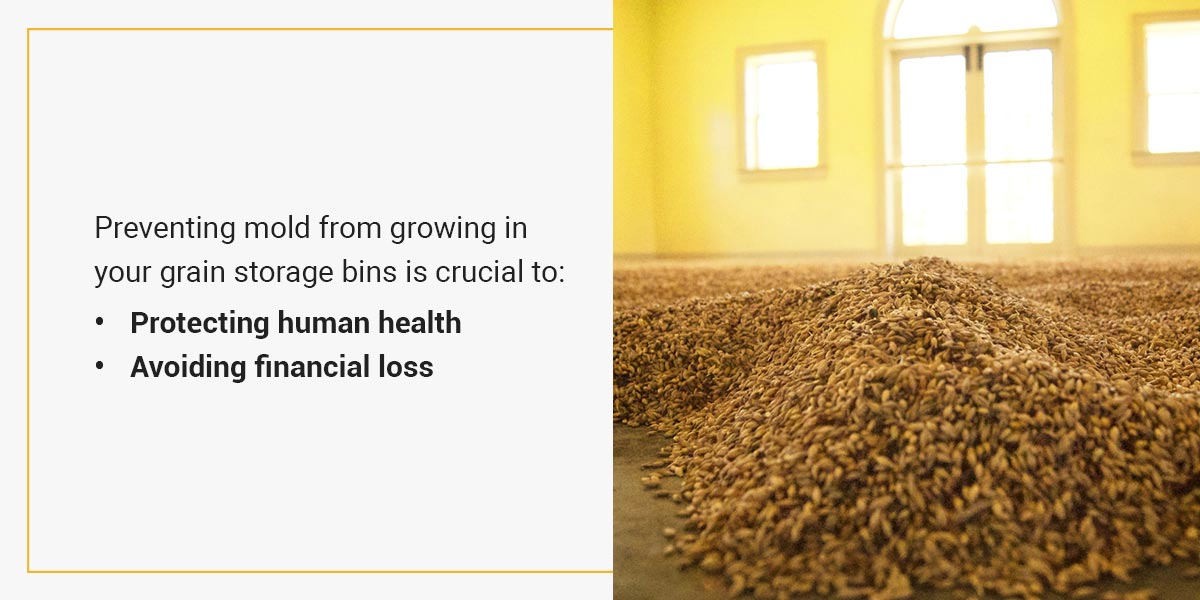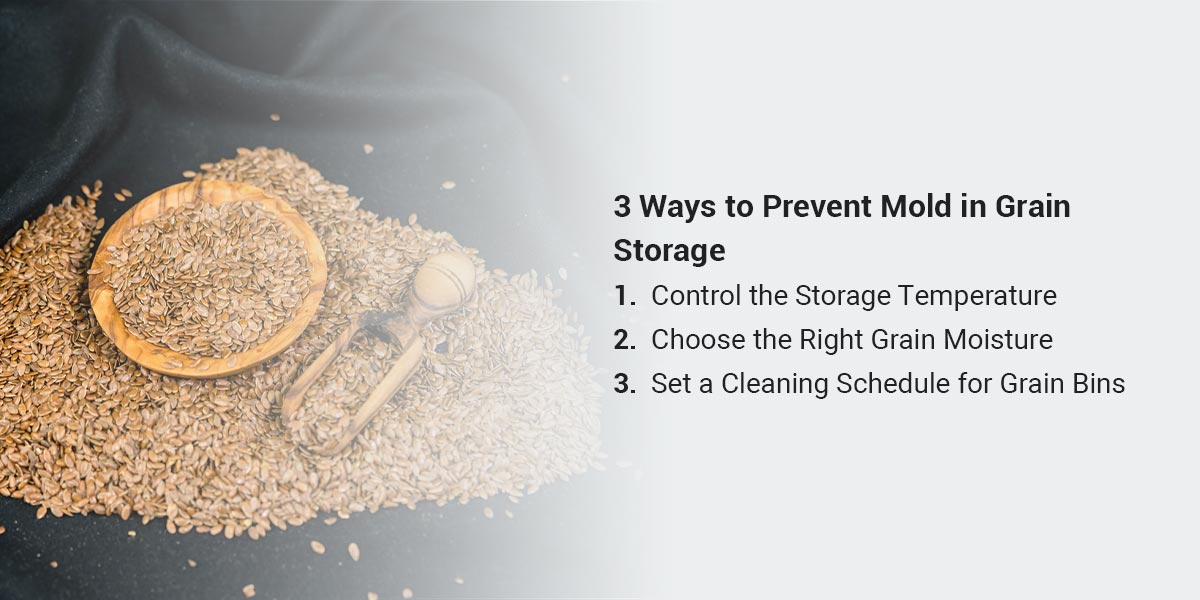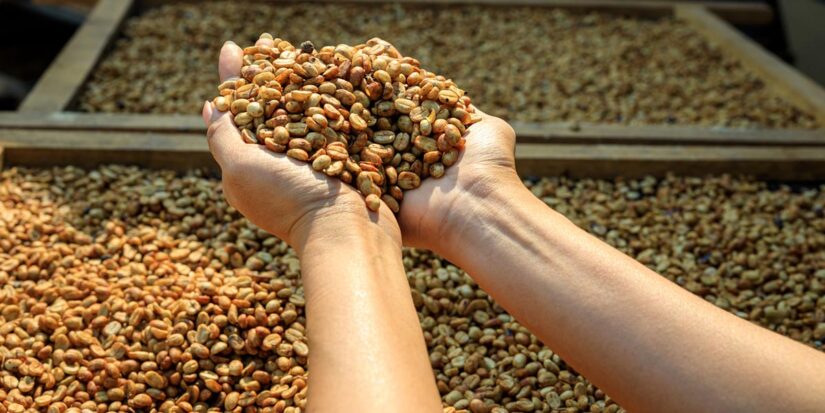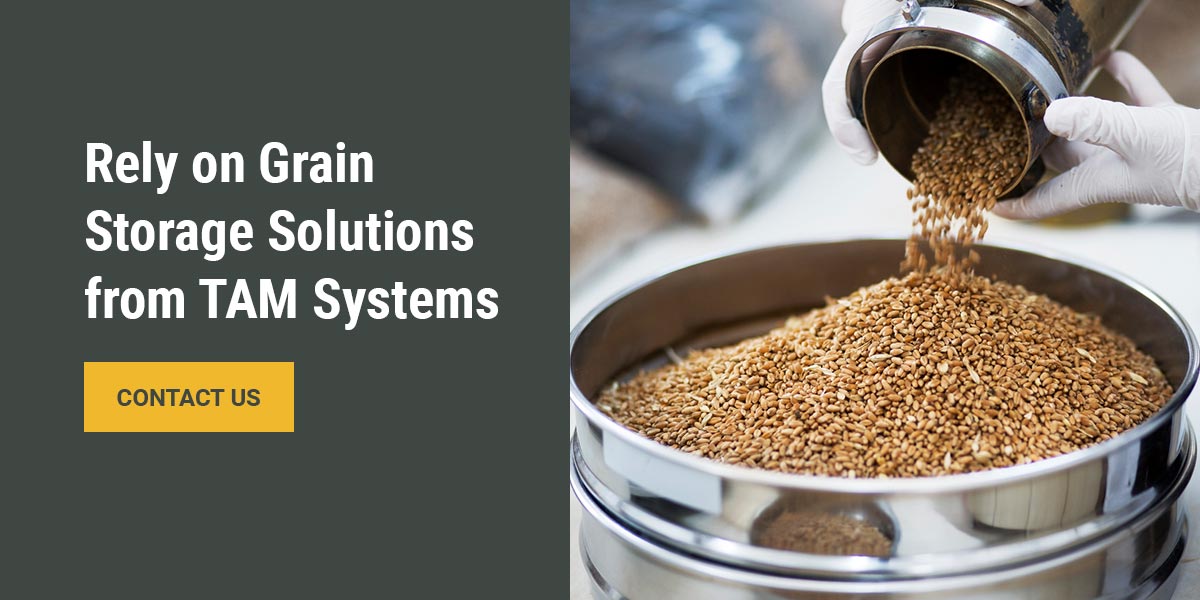Mold and spoilage are common problems that farmers and agricultural processing professionals must work to prevent. Mold can cause production delays and ruin entire loads of product, costing you time and money. Preventing mold and other types of spoilage is crucial to a successful harvest. Learn what you can do to prevent mold growth in grain storage bins.

Importance of Preventing Mold in Grain Storage
The consequences of mold in grain storage can be significant. Preventing mold from growing in your grain storage bins is crucial to:
- Protecting human health: Mold in any capacity, whether it’s growing in between the bathroom tiles or in grain storage, can seriously affect human health. When moldy grain goes undetected, humans and animals risk consuming poisonous mycotoxins in the fungi. Proper grain storage management helps reduce the risk of spoiled grain poisoning humans.
- Avoiding financial loss: You could face significant financial loss if you discover mold in your grain storage bins. Contaminated grain has little to no value for producing food and most buyers will reject it. If the contaminated grain mixes with clean grain at any point during storage or transportation, you’ll lose even more of the harvest and profit.
Risk Factors for Mold Development in Grain Storage
The most prominent risk factors that increase the chance of mold development and enhance its growing conditions include:
- Storage temperature and length: The temperature and amount of time at which you store your grain can have some of the most significant impacts on mold growth. Extreme precautions and an adequate prevention system are essential for storing grain over long periods. The temperature of your grain storage requires the same level of caution and preparation. Be sure to pay attention to the proper temperature and moisture levels for any grains you store.
- Grain impurities: Grain impurities like insects, broken seeds, plant debris and weed seeds break the grain’s exterior barrier. Together with their high levels of moisture, these two elements increase the risk of mold development and growth.
3 Ways to Prevent Mold in Grain Storage
Of course, knowing you need to prevent mold and actually doing so are two different things. To help you take action, we’ve assembled these three common mold precautions in grain farming. Using the following tips can help you prevent mold from spoiling your grain.
1. Control the Storage Temperature
Controlling your storage bin temperature is crucial — keeping your grain storage bins at cool temperatures helps prevent fungal development while also reducing insect activity.
Grain bin temperatures often reflect the temperatures outside, which means they heat up significantly during the summer. At temperatures above 70, the grain is more likely to exceed the recommended moisture content and develop ideal conditions for mold growth.
Bin vents can improve airflow through a storage bin, helping you maintain control over the temperature. Regularly clean the vents to keep them unobstructed and ensure they’re working correctly to maintain adequate airflow.
2. Choose the Right Grain Moisture
While some moisture is necessary, excess moisture is one of the main culprits of initiating and accelerating mold and fungal growth. Different types of grain have different moisture levels that they can reach before mold begins to grow. Maintaining safe moisture levels is critical to managing mold potential during grain storage.
Here are a few tips for controlling moisture in grain storage:
- Turn the product to distribute moisture and break up hot spots evenly.
- Regularly monitor moisture levels in storage bins.
- Monitor humidity and weather conditions so you can adjust your aeration system accordingly.
- Implement an industrial fan system to aerate the grain.
- Perform regular maintenance on intake and exhaust ducts and vents.
3. Set a Cleaning Schedule for Grain Bins
To prevent mold growth and pest infestations, you need to keep grain bins and their surrounding areas clean. Setting a cleaning schedule will help you keep track of what you need to clean and when to prevent mold growth.
Be sure to clear away all residue from previous years, including anything stuck to the walls. Removing this residue will prevent mold from transferring to your current grain harvest. The cleaner the bin, the less likely this situation is to occur. Pay special attention to the plenum area, as debris can collect there unseen. Be sure to clear debris from under the full aeration floor to prevent mold from growing in this area.
It’s also vital to clean the area surrounding the bin’s exterior and keep it clear. You’ll want to keep debris and weeds around the bins to a minimum to prevent insect and rodent infestations.

Signs of Grain Spoilage
Grain spoilage occurs most often when grain sits in storage for long periods, such as over weekends, during product delays or in long-term storage situations. Out-of-service or poorly maintained silos also create favorable environments for mold growth. When production operations are able to move products within a few days, they minimize the opportunity for mold growth — they simply don’t allow the grain to sit long enough for mold to develop.
Since grain spoilage can lead to discarded product, production delays and financial loss, you and your processors need to be aware of common signs of grain mold. Familiarize yourself with the indicators to watch for, including:
- Discoloration.
- Musty smell.
- Insect infestations.
- Visible mold and fungi growth.
- Ice or frost accumulation.
- Slimy, wet grains.
- Excess moisture around vents or on roof surfaces.
- Blockages.
Keep in mind that grain with some traces of fungus is normal and still salable. Lab tests can help you determine the types of mold you’re dealing with and the level of contamination. If you have lower-quality batches of grain that you can still sell, do so early in the season to prevent the mold from worsening and getting out of hand.
Rely on Grain Storage Solutions from TAM Systems
Preventing mold in your grain storage begins with having high-quality storage bins. Grain bins from TAM Systems are well-engineered, with advanced aeration systems to provide even air distribution to prevent mold growth. Our grain storage solutions allow for easy cleaning and can support significant amounts of grain weight. We even offer custom-designed grain bins to meet the varying needs of our customers.
Contact us today to learn how our grain storage solutions can help you prevent mold growth in your grain.



